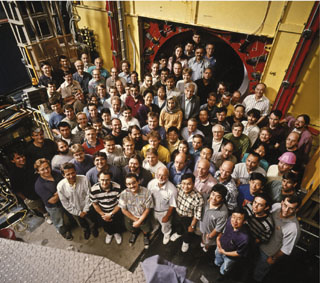
On 9-10 December a symposium at Cornell University, Ithaca, New York, will mark the 20th anniversary of the Cornell Electron Storage Ring, the CLEO particle detector and the Cornell High-Energy Synchrotron Source. It will also herald the beginning of a new era of B meson physics and a new generation of synchrotron radiation beamlines.
The Cornell Electron Storage Ring (CESR) is now completing a major upgrade with the goal of producing more than 15 million B meson pairs per year. Simultaneously the CLEO detector is installing a new silicon vertex detector, drift chamber and ring-imaging Cherenkov counter. Accelerator commissioning has begun, and data collection is expected to begin in early 2000. The CESR and CLEO upgrades will open the door to studies of CP violation, rare B decays and precision measurements of quark mixing. Cornell is a major player in this new physics push.
In parallel with the CESR/CLEO upgrade, the Cornell High-Energy Synchrotron Source (CHESS) is upgrading its X-ray optics. Construction of a building to house three new, ultrahigh flux X-ray stations is well under way.
In the past 20 years, CESR and CLEO have provided much of the world’s knowledge on heavy quark and lepton physics. Highlights have been the discoveries of the B meson (CLEO, CUSB 1979-1980), the first observation of transitions between the bottom and up quarks (CLEO, 1990) and the first direct sighting of “penguin” decays (CLEO, 1993).
More information can be found at “http://www.lns.cornell.edu/symposium.html“.







